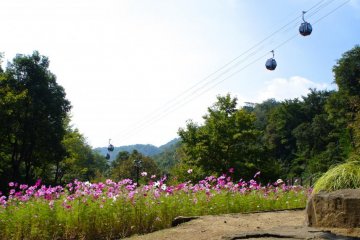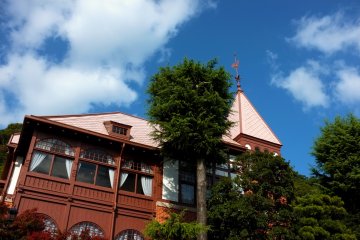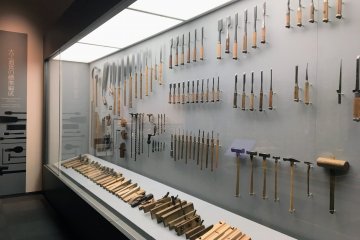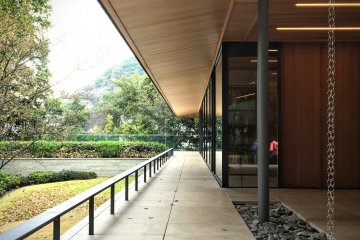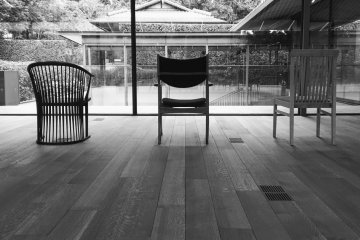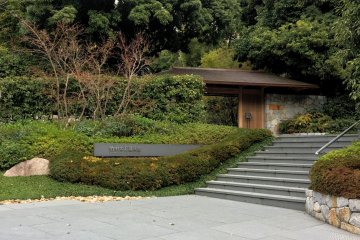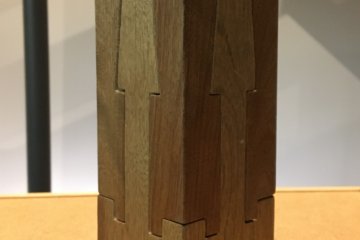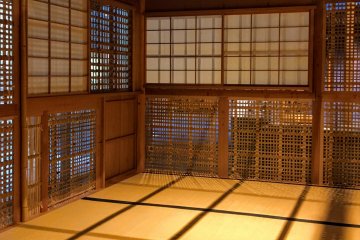179 was the number of core tools needed in 1943 to construct a typical building, according to a survey of Tokyo carpenters. 42 years later, this number had fallen to 20, with another 59 tools cited as occasionally used. While innovation both in general and in the realm of construction puts a rocket booster on efficiency, it is impossible not to mourn the ensuing loss of traditional techniques.

Skills such as intricate hand joinery, tatami mat weaving, and ink pot carving are fast turning into casualties in the march of technical progress, even in a nation which places so much pride in Monozukuri, or ‘craftsmanship’.
In reaction to the loss of intangible heritage, the Takenaka Museum was created both to preserve old tools and techniques, but also to display them to the world.
The museum itself is beautiful to look at. It is built two-thirds underground to minimize its visual impact upon the surroundings. The first floor appears almost transparent, constructed from natural materials and a skilled use of traditional carpentry techniques.

Upon entering, visitors are greeted with a spacious lobby. Chairs produced by local artists are thoughtfully arranged about the room, encouraging you to take a moment to sit and enjoy the view - a peaceful garden on one side and Mount Rokko on the other.

Exhibits are displayed in the two subterranean floors. Taking advantage of the free and well narrated multi-lingual audio guide, visitors can browse through seven themed sections including displays of tools both traditional and modern, different carpentry techniques and the painstaking restoration of the world’s oldest wooden structure, the Pagoda of Horyu-ji Temple.
Perhaps the greatest delight of the Takenaka Museum is the way everything is designed to be touched; visitors are encouraged to feel the smoothness of preserved stone axes, the texture, and shape of different kinds of wood shavings, even step inside a life-sized skeleton structure of a sukiya tea house. It is easy to lose yourself in the smell of different kinds of wood and the endless disassembly and reassembly of wood joints that hold fast with nothing but careful joinery.

Excitingly, the museum holds frequent workshops from blade sharpening to chopstick making, which are open to the public to attend by purchasing a ticket at the front desk. More information is available on their website (Japanese only).
The Takenaka Museum is so much more than an impressive collection of carpentry tools. It is a place where you can learn about history and artistry; a place for marveling at human ingenuity and the cleverness of hands.
Current special exhibition: The Shape of Prayer





